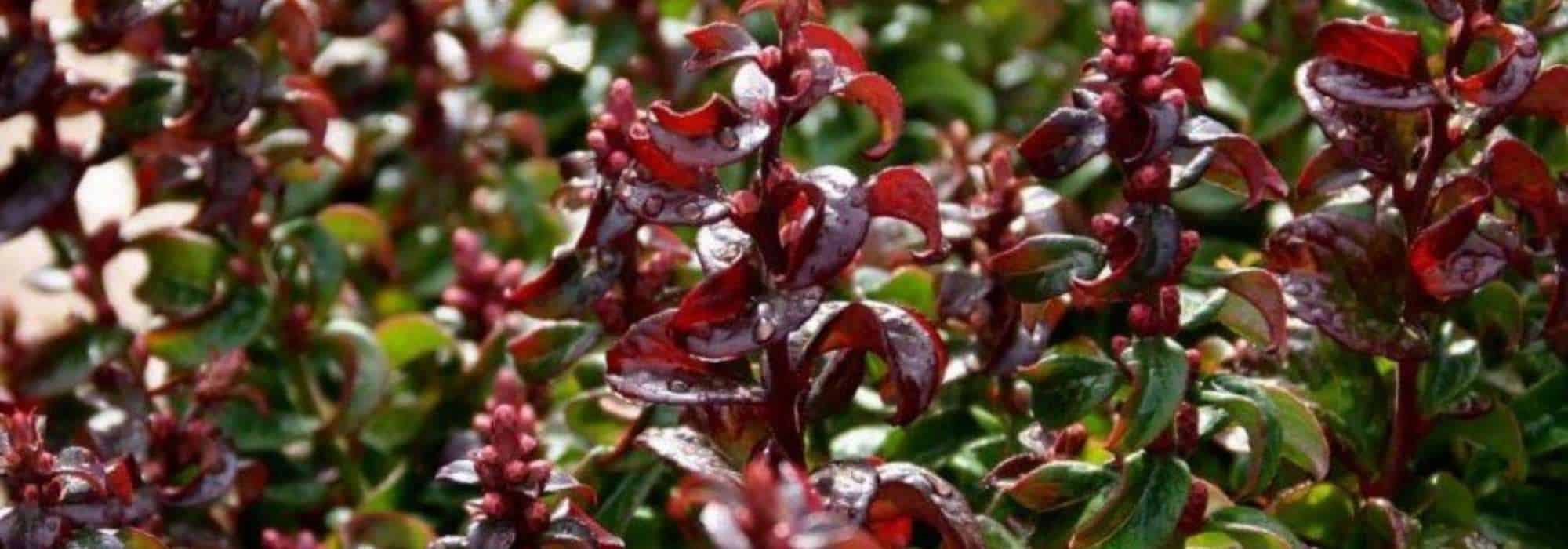
How to choose a leucothoe?
OUR BUYING GUIDE TO MAKE THE RIGHT CHOICE
Contents
The Leucothoe is a beautiful shrub, still rare in our gardens yet very interesting for its magnificent evergreen foliage that changes colour throughout the seasons. It is sometimes referred to as “Pearl Flower,” in reference to its small white or pink flowers that appear discreetly in spring, releasing a light, fresh, and delicate fragrance. This heather soil-loving bush prefers acidic, rich soils that remain slightly moist. Very resilient, hardy, and unique, its lovely dense silhouette beautifully decorates shaded or semi-shaded gardens and terraces. Discover our buying guide to choose a Leucothoe.
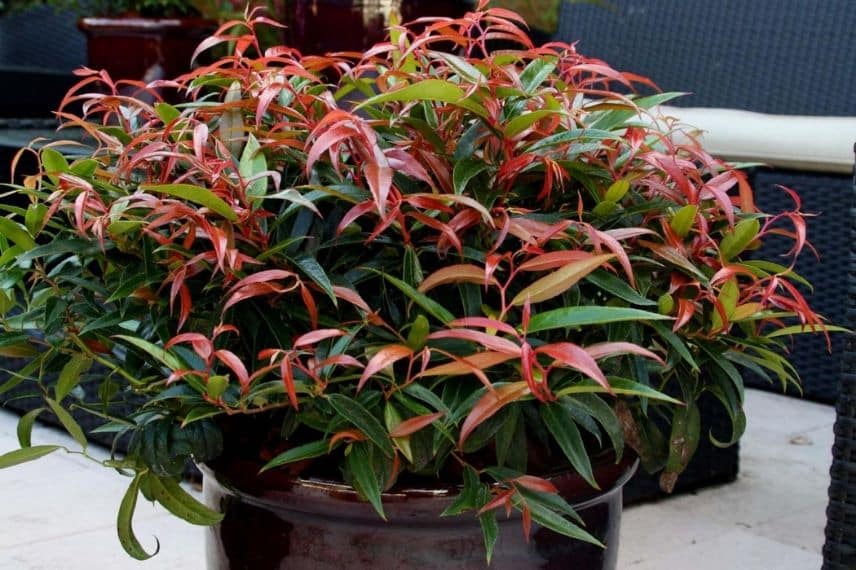
With its lovely changing foliage, the Leucothoe keiskei ‘Burning Love’ is stunning both in pots and in borders.
According to the colour and shape of the foliage
The main asset of Leucothoe is its remarkable foliage, changing throughout the seasons, offering shades ranging from green to purple, including red and copper. However, some cultivars do not stop there and attempt to attract attention by playing on the shape of their recurved and incurved leaves. Here are some admirable varieties:
- In spring, the young leaves of the Leucothoe fontanesiana ‘Little Flames’ appear in coppery red hues, then turn green at ripeness, before becoming completely red, even purple, with the arrival of winter cold.
- The Leucothoe axillaris ‘Curly Gold’ features original, recurved foliage, with young leaves emerging in orange-red in spring, turning golden, then acid green.
- The young spring leaves of the Leucothoe fontanesiana‘Whitewater’ dress in purple, before becoming beautifully variegated with dark green and cream-white margins. Later, during winter, they take on a purple hue.
- The Leucothoe fontanesiana ‘Rainbow’ stands out with its foliage of young shoots in orange-red, evolving into dark green marbled with white and pink during summer, and turning dark red under winter’s chill.
- The Leucothoe fontanesiana ‘Makijaz’ does not go unnoticed with its pink leaves at bud burst, then green speckled with white. They turn pink in summer, ultimately becoming purple when the cold arrives.
- The shiny leaves of the Leucothoe axillaris ‘Twisting Red’ are surprising: twisted and curled, they are a beautiful purple-red at bud burst, later bright green, before turning purple in autumn.
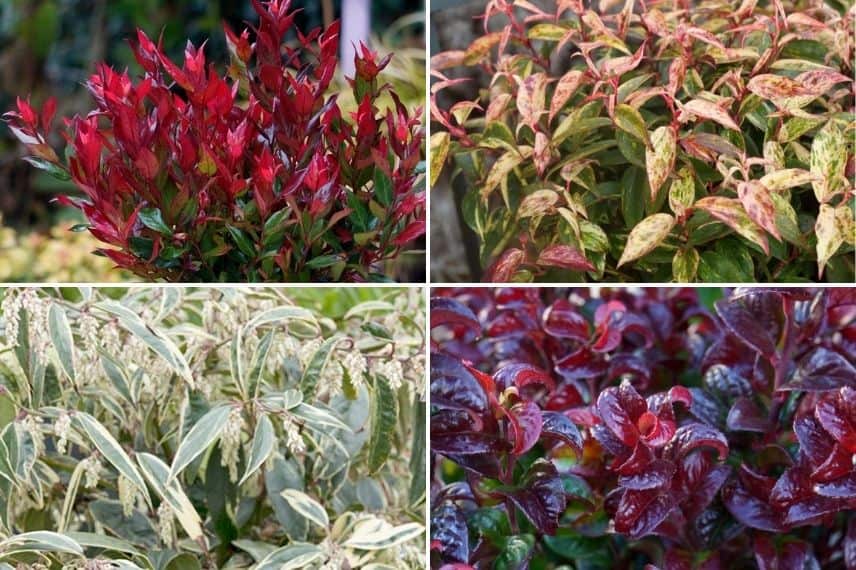
From left to right: Leucothoe fontanesiana ‘Little Flames’, Leucothoe fontanesiana ‘Makijaz’, Leucothoe fontanesiana ‘Whitewater’ and Leucothoe axillaris ‘Twisting Red’
Read also
Growing a leucothoe in a potBased on leaf persistence
Among the fifty varieties of Leucothoe found worldwide, only a small handful are cultivated in our regions. Most of these Leucothoes have evergreen foliage, which is very interesting for decorating the garden in every season.
Only the Leucothoe of the species Axillaris, such as the cultivar ‘Curly Gold’, ‘Curly Red’, and ‘Twisting Red’ exhibit semi-evergreen foliage in regions where winters are very mild. In colder areas, these three Leucothoe are likely to lose their leaves in winter. However, they will quickly make you forget this inconvenience with the return of spring, showcasing their beautiful twisted foliage, emerging in shades of red and turning green at ripeness.
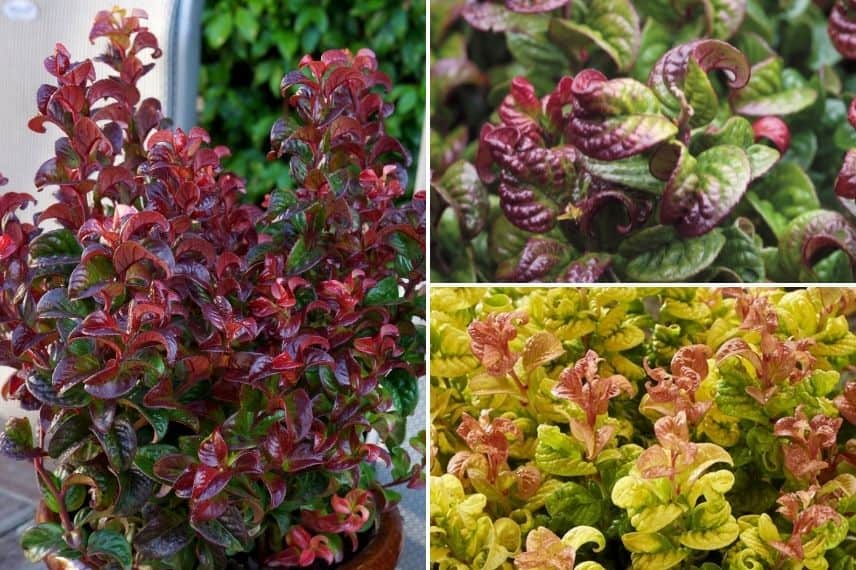
The three Leucothoe of the Axillaris species have semi-evergreen foliage: ‘Twisting Red’, ‘Curly Red’, and ‘Curly Gold’
Discover other Leucothoe
View all →Available in 2 sizes
Available in 2 sizes
Available in 1 sizes
Available in 1 sizes
Available in 1 sizes
Available in 1 sizes
Available in 1 sizes
Available in 1 sizes
Available in 1 sizes
Available in 1 sizes
According to its size
Leucothoes are bushy shrubs, with heights ranging from 40 cm to 1.50 m depending on the variety.
Among the smaller forms, you will find Leucothoe axillaris ‘Twisting Red’ and Leucothoe fontanesiana ‘Makijaz’, which will form a lovely dense bush rarely exceeding 40 cm in height and 50 to 65 cm in spread. They are perfectly suited for border plantings, in small spaces, and in pots to decorate a terrace.
The Leucothoe fontanesiana ‘Zebonard’ is one of the larger varieties, reaching up to 1.50 m in height and 3 m in spread. It is ideal for forming a hedge or in a large shrub border.
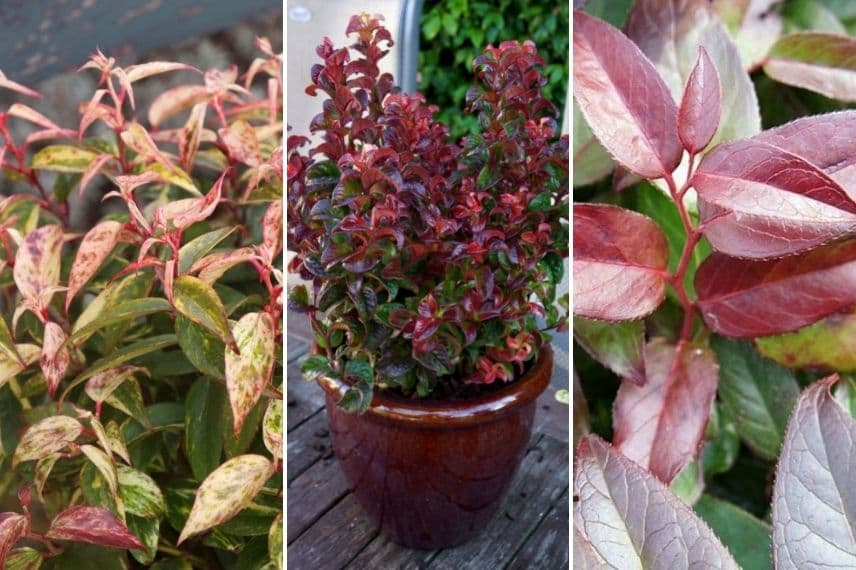
Leucothoe fontanesiana ‘Makijaz’, Leucothoe axillaris ‘Twisting Red’ and Leucothoe fontanesiana ‘Zebonard’
according to its use
In a Small Free Hedge
With their small size and very dense habit, Leucothoes are perfect for forming a small free hedge in partial shade or shade. Their growth is rather slow, so it is advisable to choose larger cultivars, such as Leucothoe fontanesiana ‘Scarletta’ or the variety ‘Whitewater’ with its charming variegated foliage. They can be planted alongside other evergreen bushes such as a Daphne, a Japanese Andromeda, Rhododendrons, or Azaleas, not forgetting Hydrangeas.
To create small separating borders in the garden, you can even use the shorter varieties, for example, Leucothoe fontanesiana ‘Little Flames’ or Leucothoe axillaris ‘Curly Gold’, which have a habit that is taller than wide.
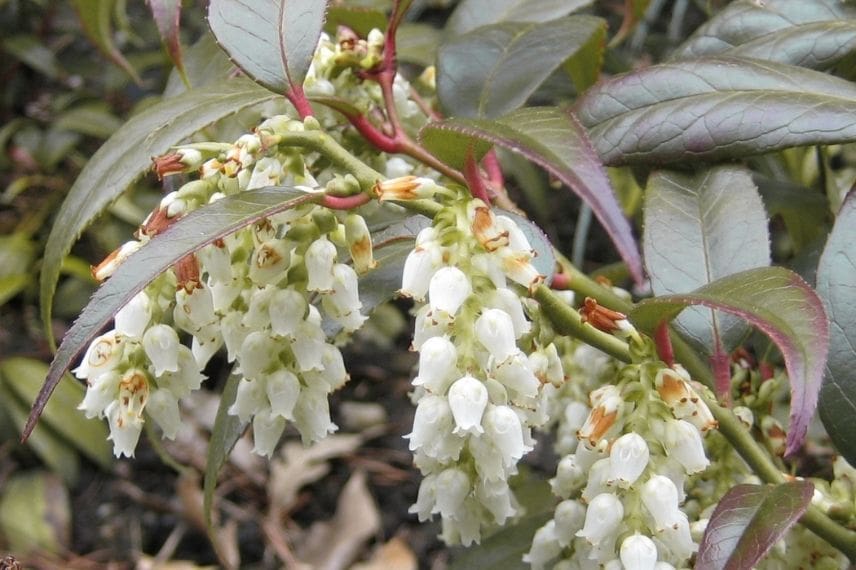
The Leucothoe fontanesiana ‘Scarletta’
In a Pot or Container on the Terrace
With its small size and lovely foliage that changes with the seasons, Leucothoe beautifully decorates a terrace or balcony. It is worth noting that all varieties will adapt to pot culture, so you will have plenty of choices. Among the most interesting are:
- The Leucothoe axillaris ‘Curly Red’ with its beautiful twisted leaves, purple at bud burst, then dark green at ripeness.
- The Leucothoe fontanesiana ‘Little Flames’ is highly valued for its young copper-red foliage in spring, turning green at ripeness, then reddening in winter.
- The Leucothoe keiskei ‘Burning Love’ is ideal for terrace decoration, thanks to its compact and spreading form. Its leaves change colour throughout the seasons, ranging from purple-orange to green, passing through bronze.
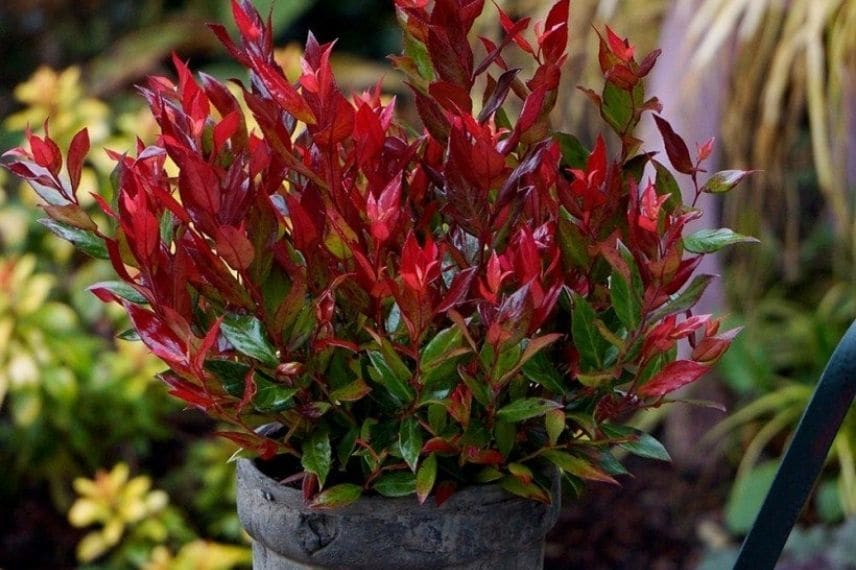
With its small size and lovely foliage, Leucothoe fontanesiana ‘Little Flames’ is stunning in a pot on the terrace or balcony
In a Rockery
Never sick and low maintenance, Leucothoes will naturally find their place in a shady or partially shady rockery. Preferably choose evergreen varieties with a compact and rounded habit, such as Leucothoe fontanesiana ‘Little Flames’, the variety ‘Scarletta’, or ‘Makijaz’ for its lovely variegated foliage. Their silhouette will complement other heather shrubs, such as a White Spruce, a Boxwood, a Japanese Maple, and a Ilex crenata ‘Convexa’.

The Leucothoe fontanesiana ‘Makijaz’
In a Flower Bed
Whether in a bed of perennials or shrubs, Leucothoe will provide a beautiful colourful display throughout the seasons. At the front, small specimens rarely exceeding 50 cm in height can be planted, such as the varieties ‘Little Flames’, ‘Makijaz’, ‘Curly Red’, or ‘Twisting Red’. At the back of the bed, cultivars exceeding 1.10 m can be installed, such as the cultivar ‘Zebonard’, ‘Scarletta’, or the beautiful ‘Whitewater’ with its cream-margined leaves. For a successful combination, add ferns, Japanese Anemones, Hostas, and some Heucheras for their colourful foliage.

The Leucothoe fontanesiana ‘Whitewater’
For further reading
- Discover all our varieties of Leucothoe
- To learn everything, browse our sheet on Leucothoe: planting, cultivation and maintenance
- Don’t miss their planting! Follow Michaël’s tips to succeed in growing heather soil bushes
- Subscribe!
- Contents
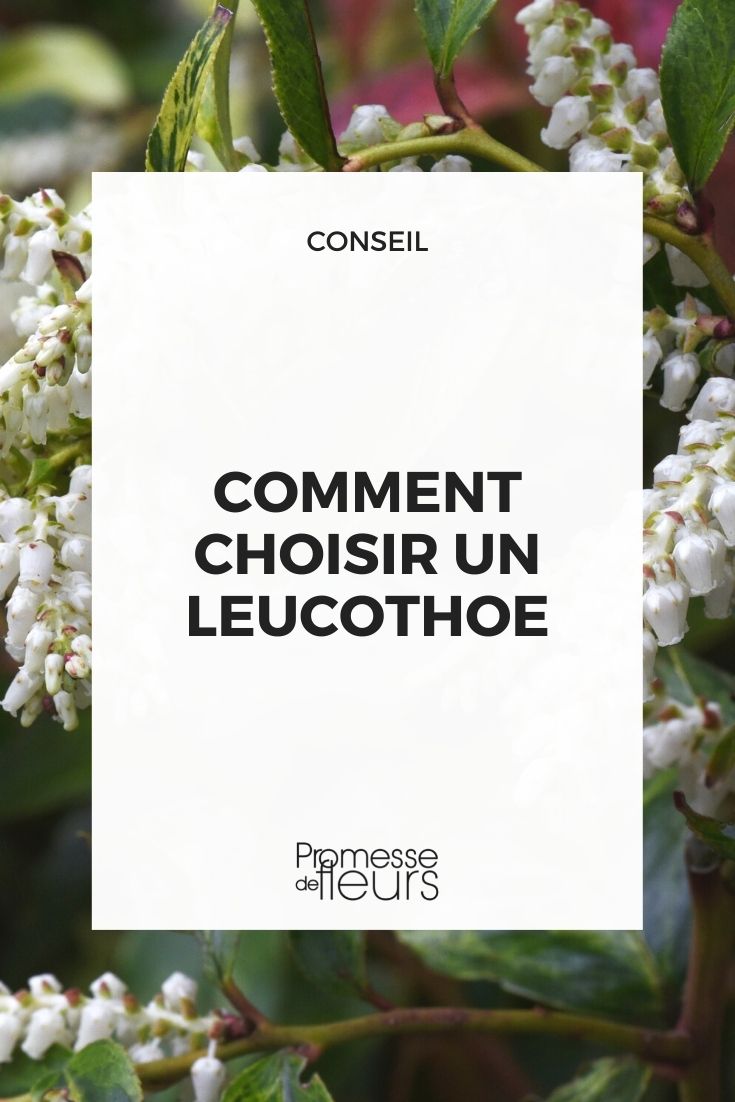

































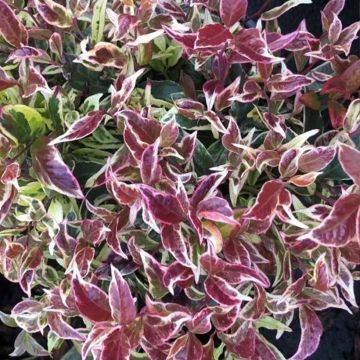
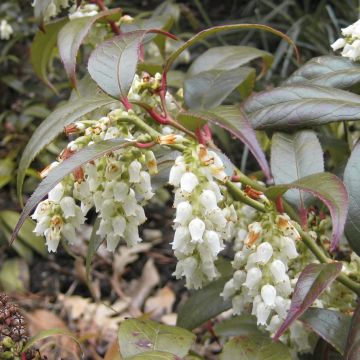
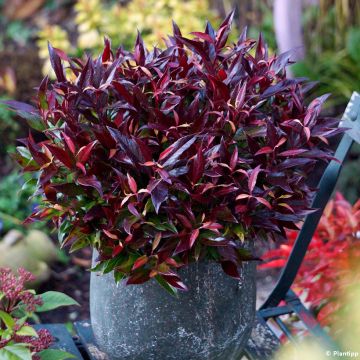

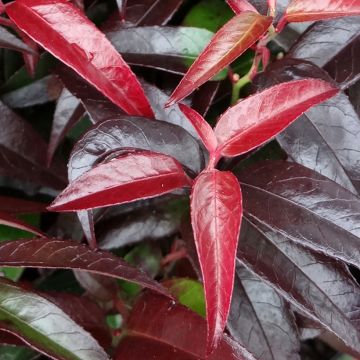
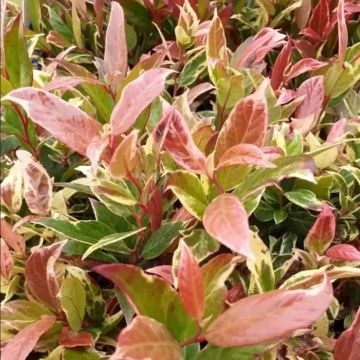
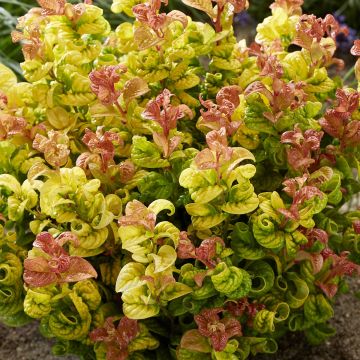
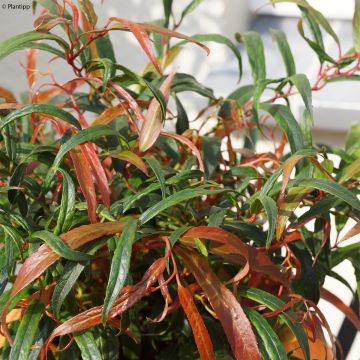
Comments